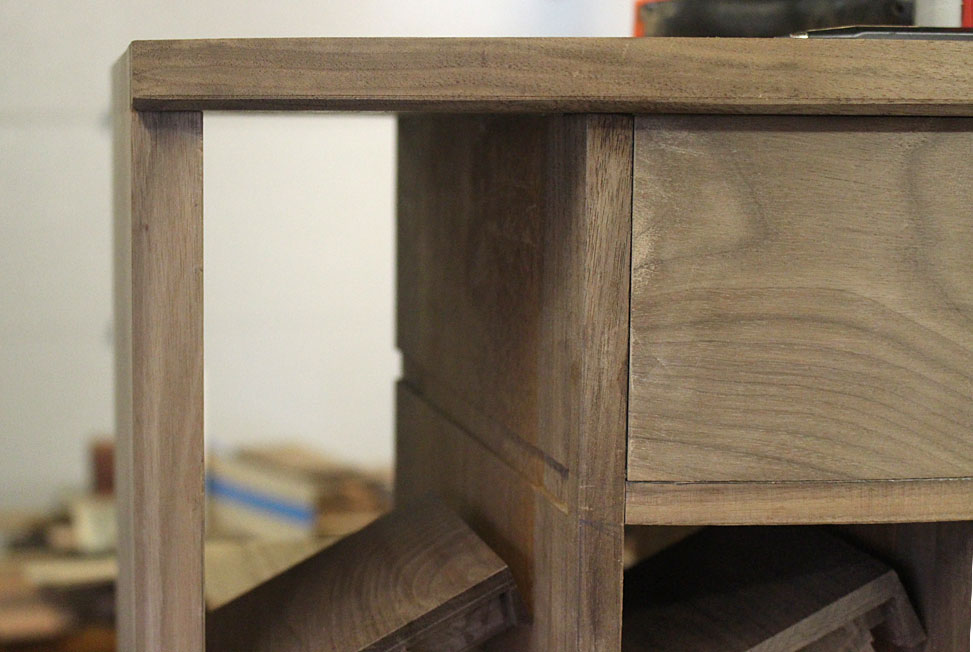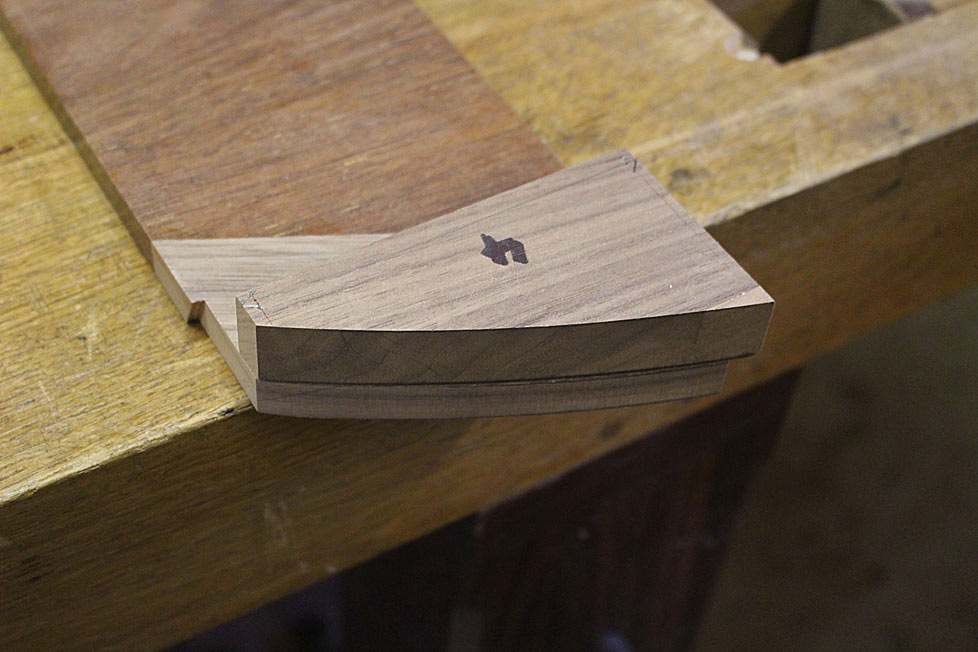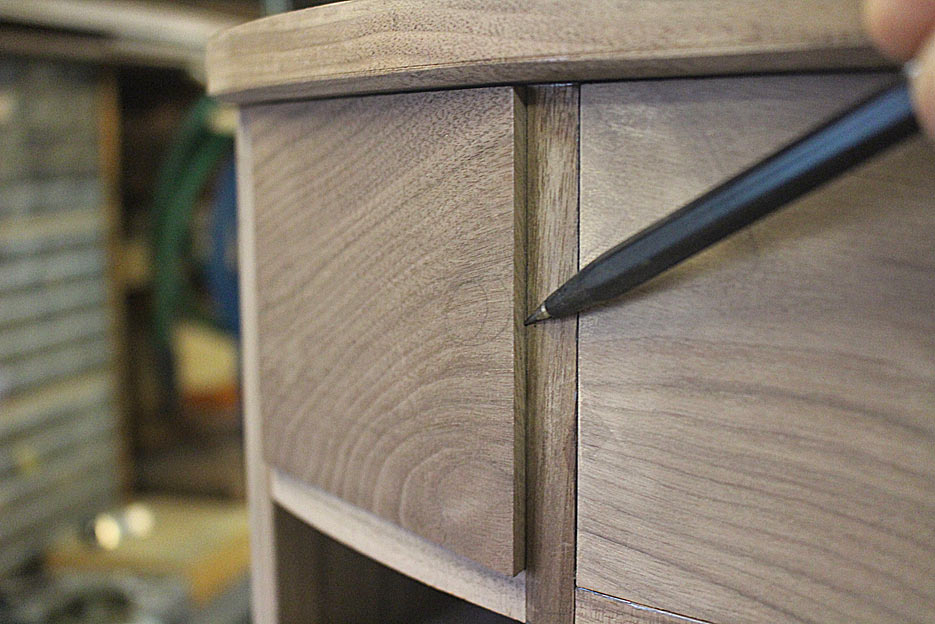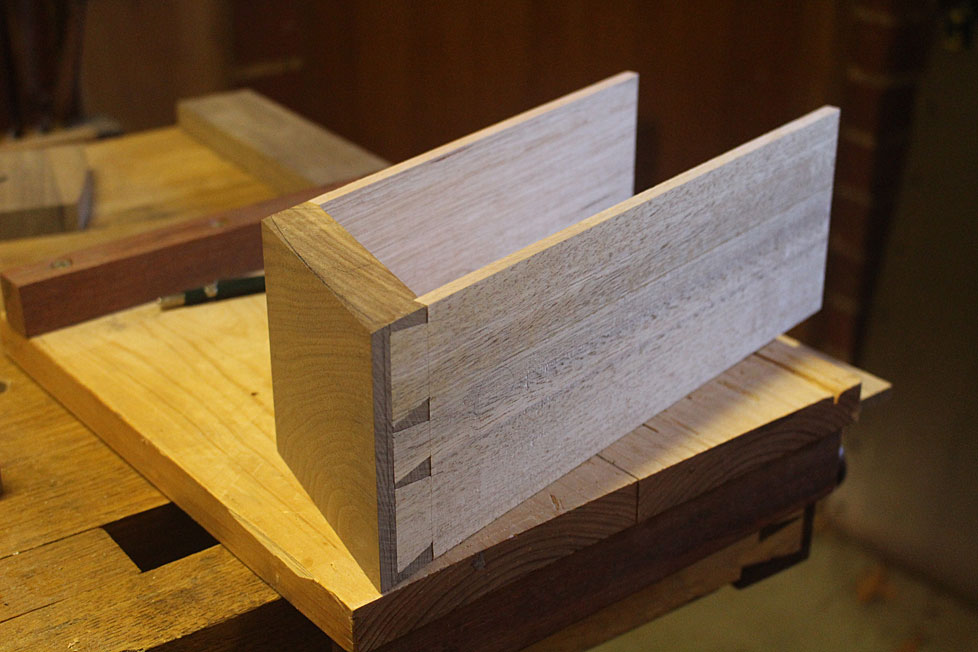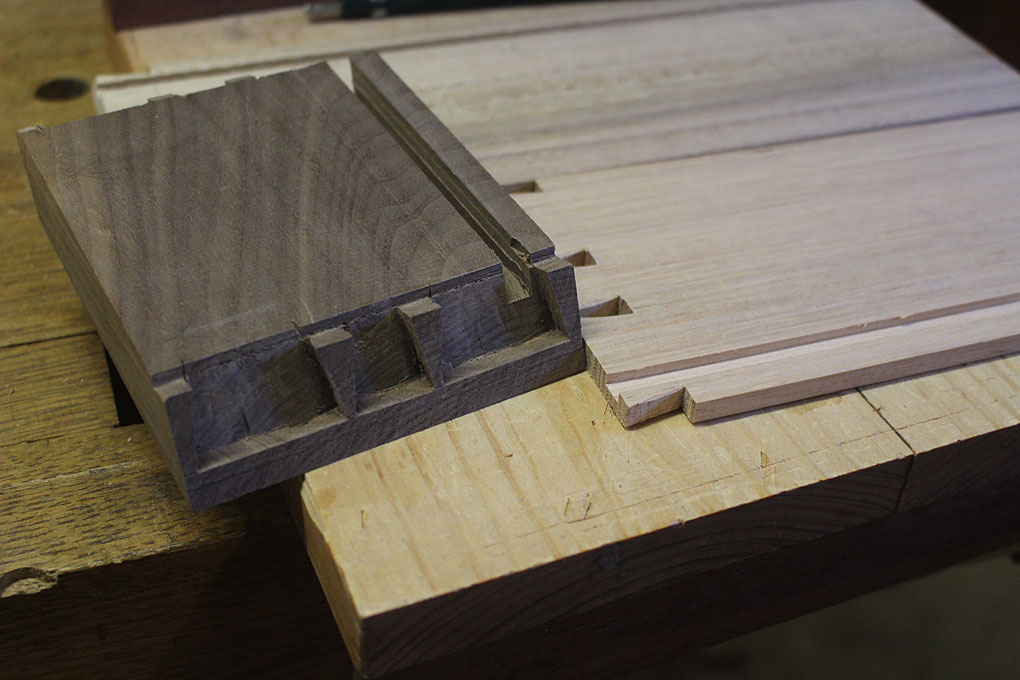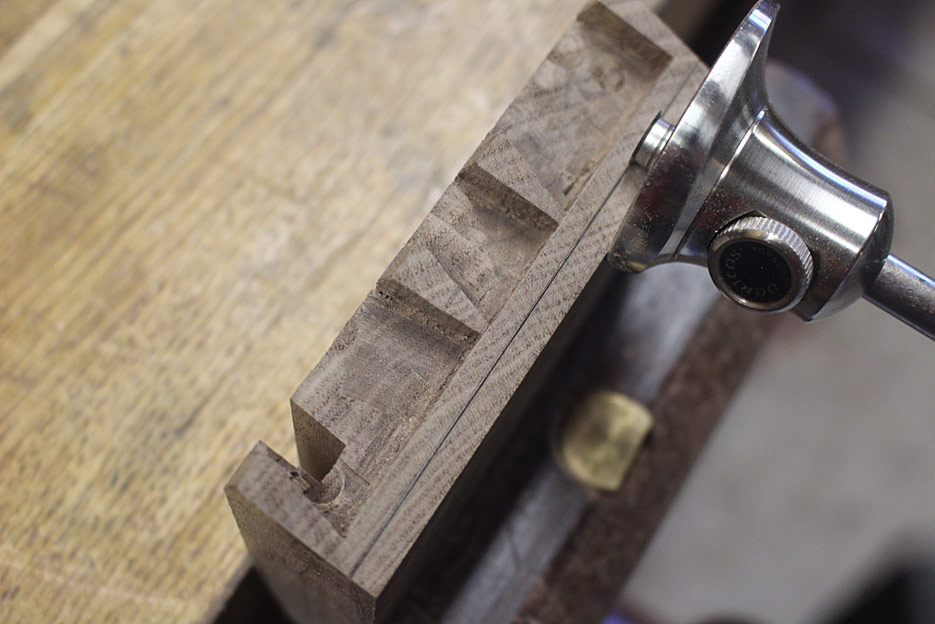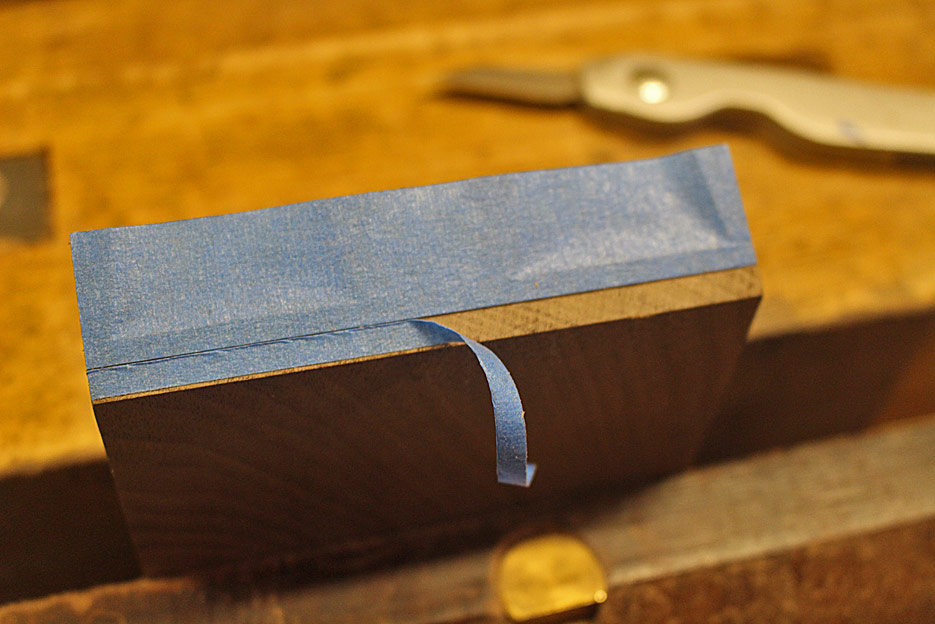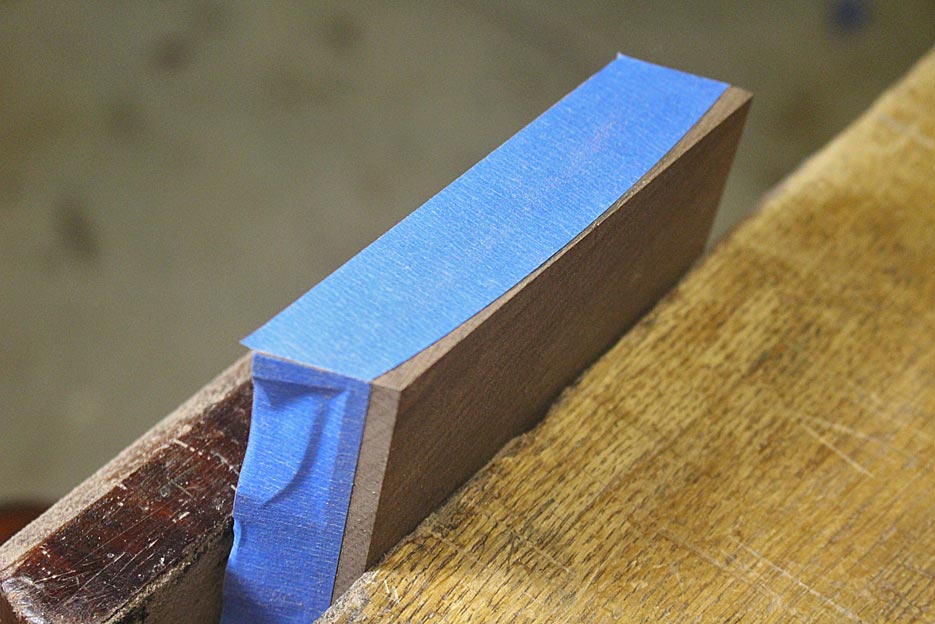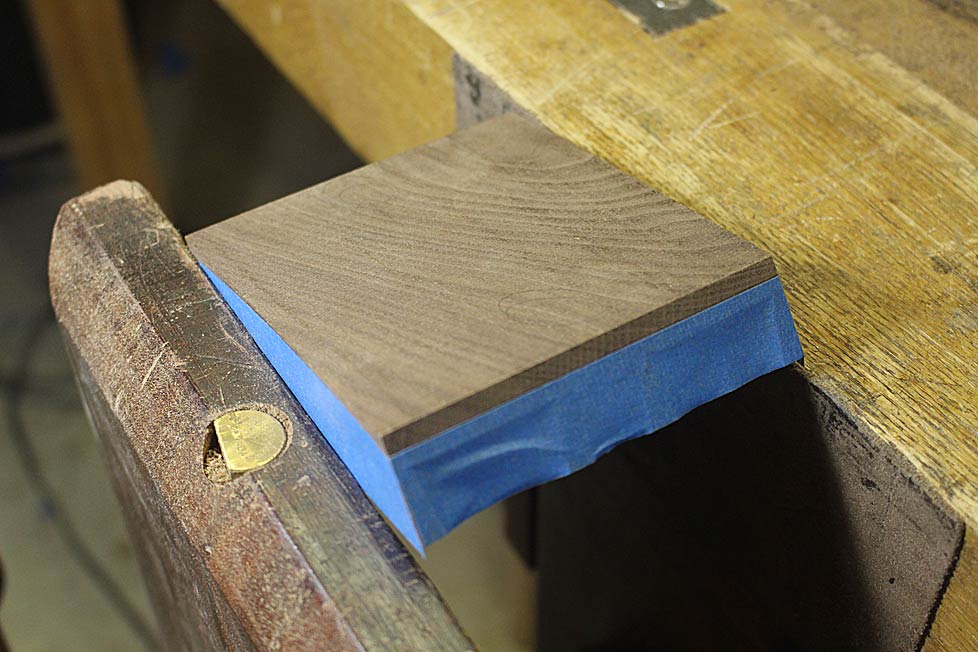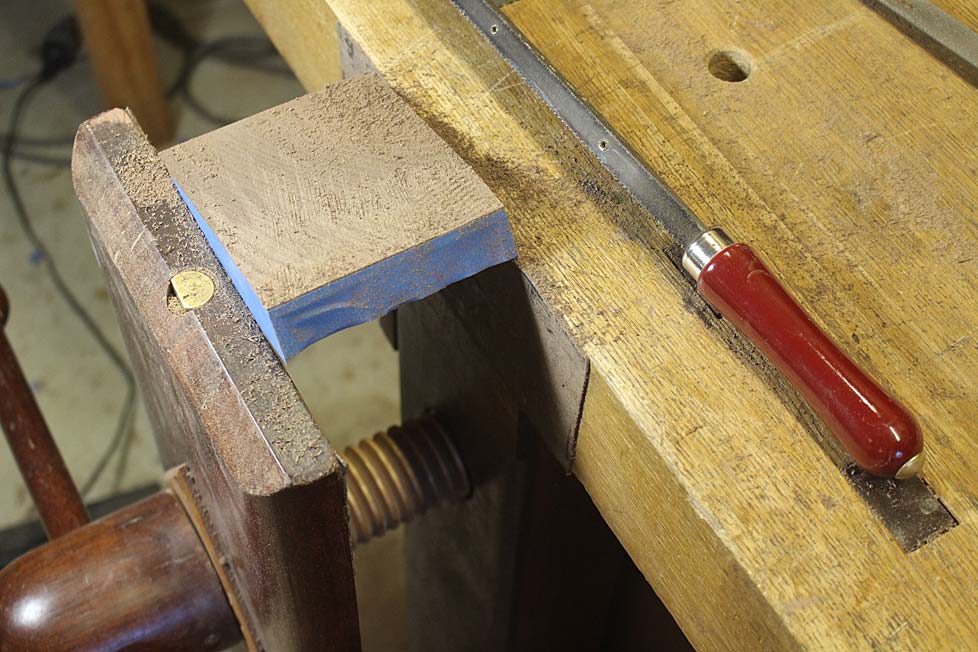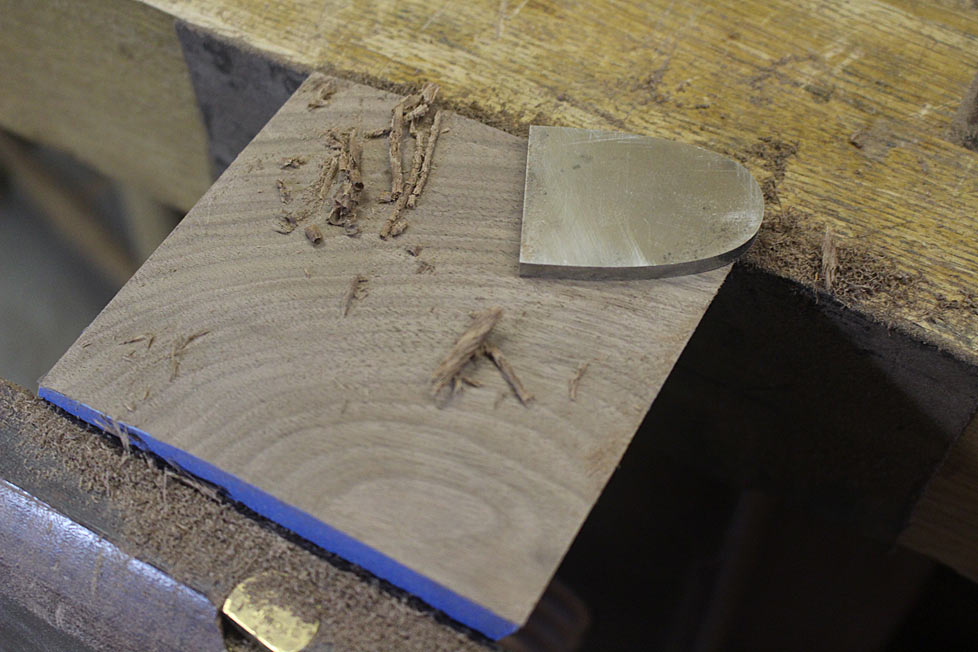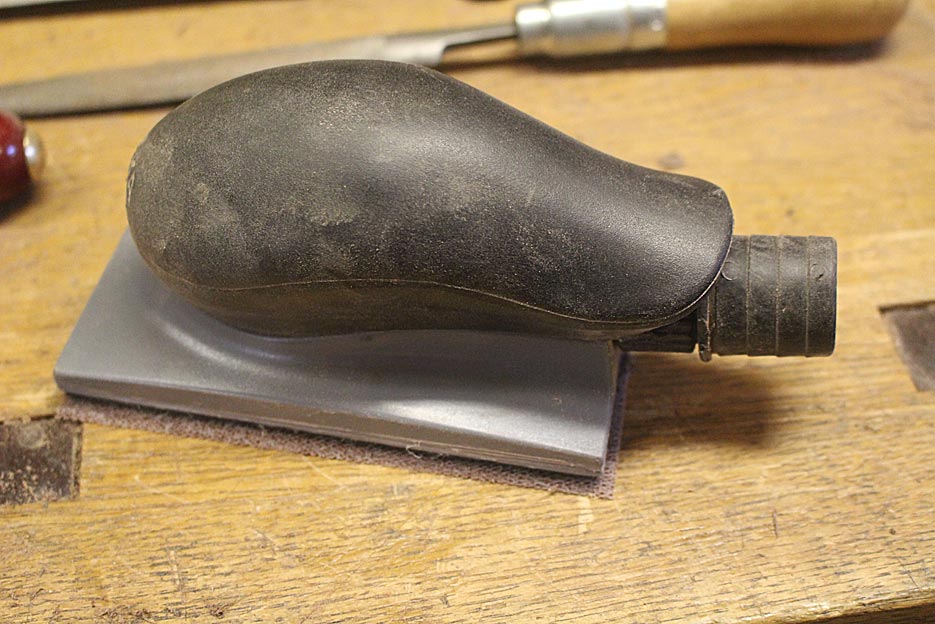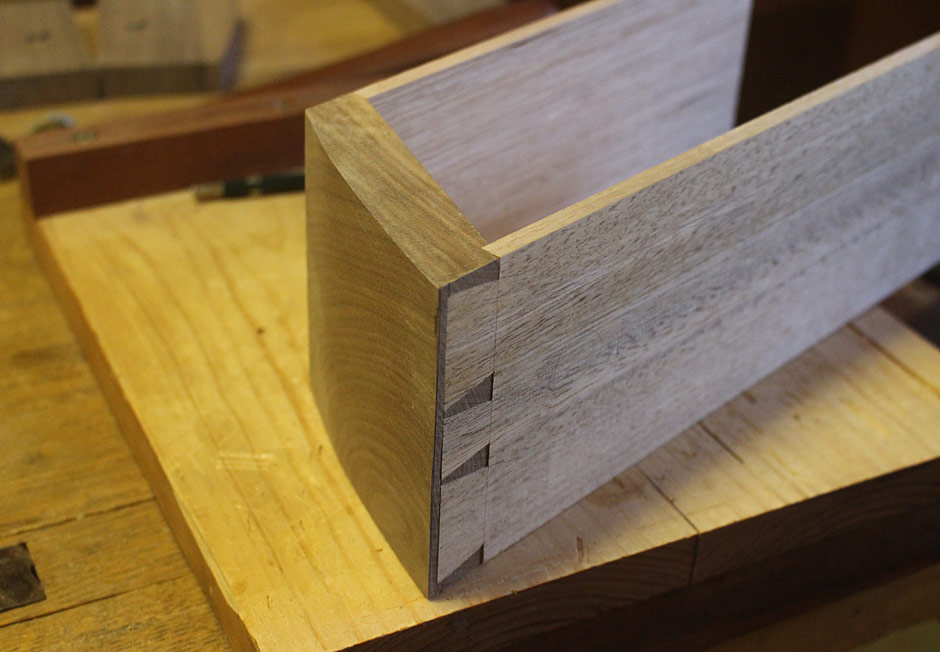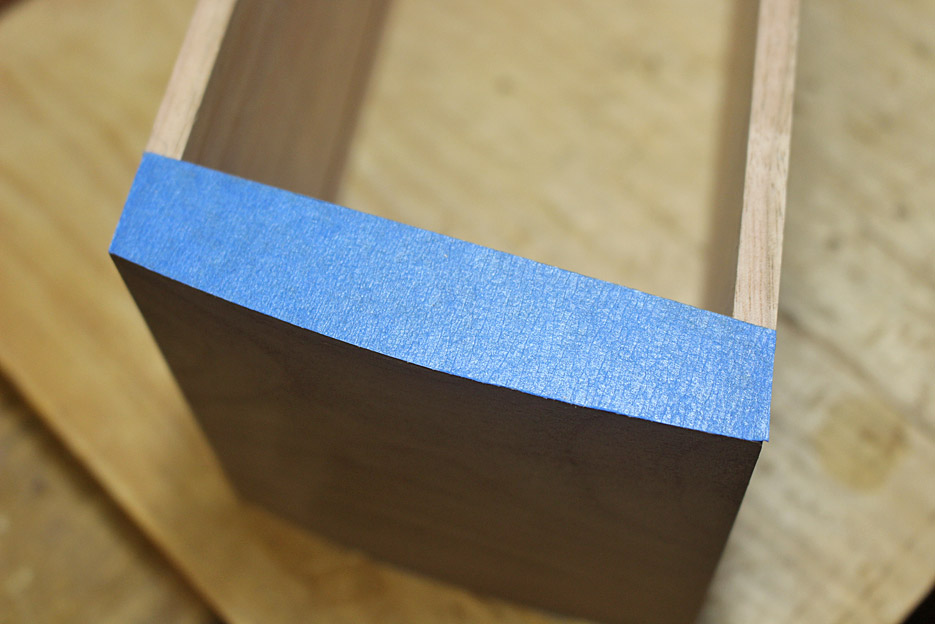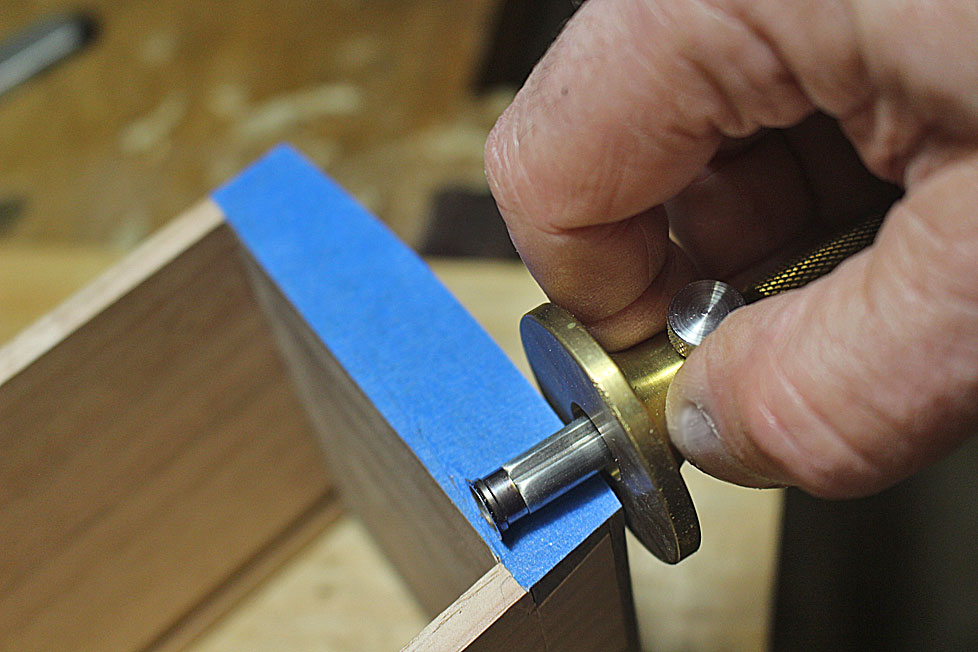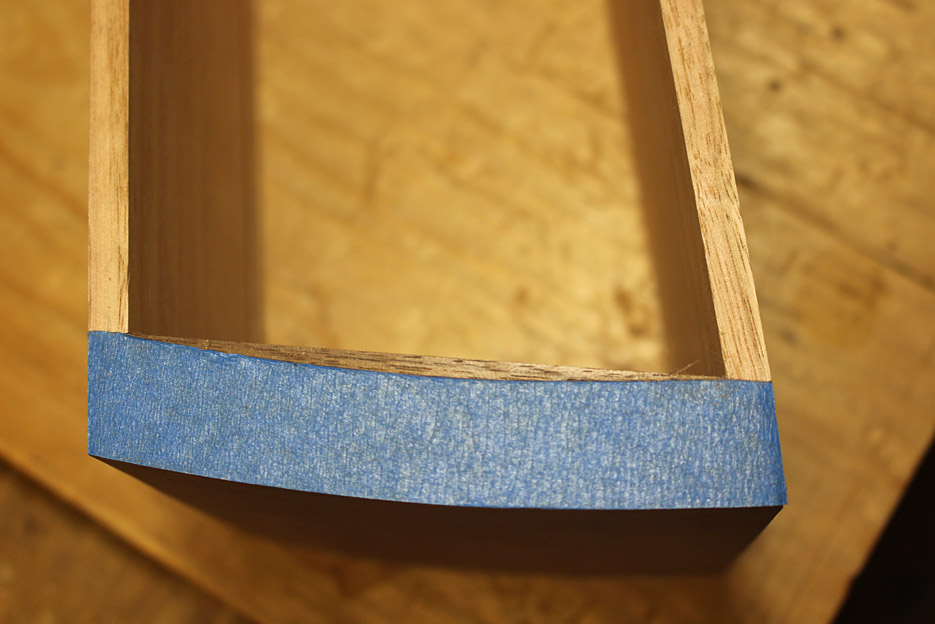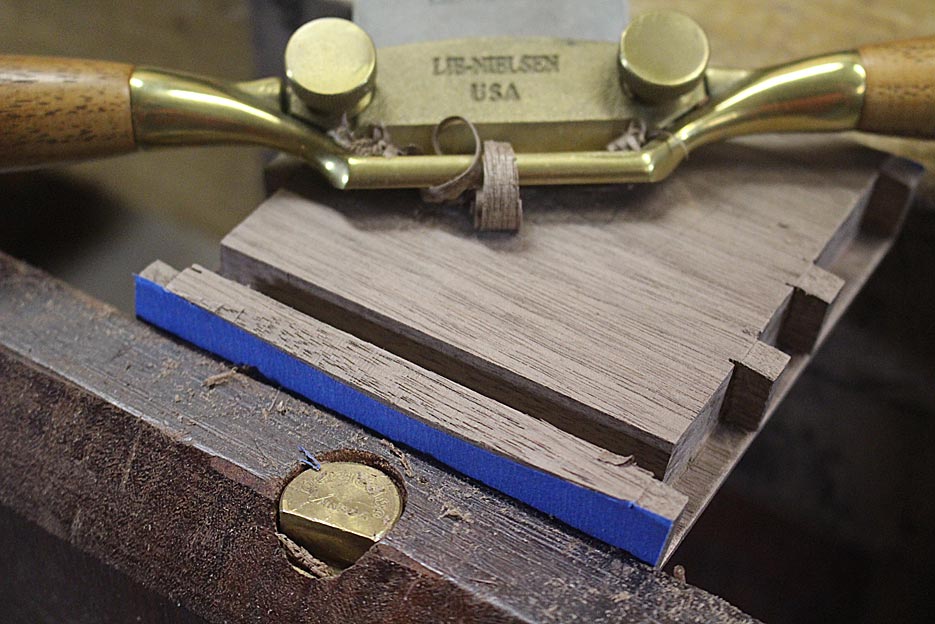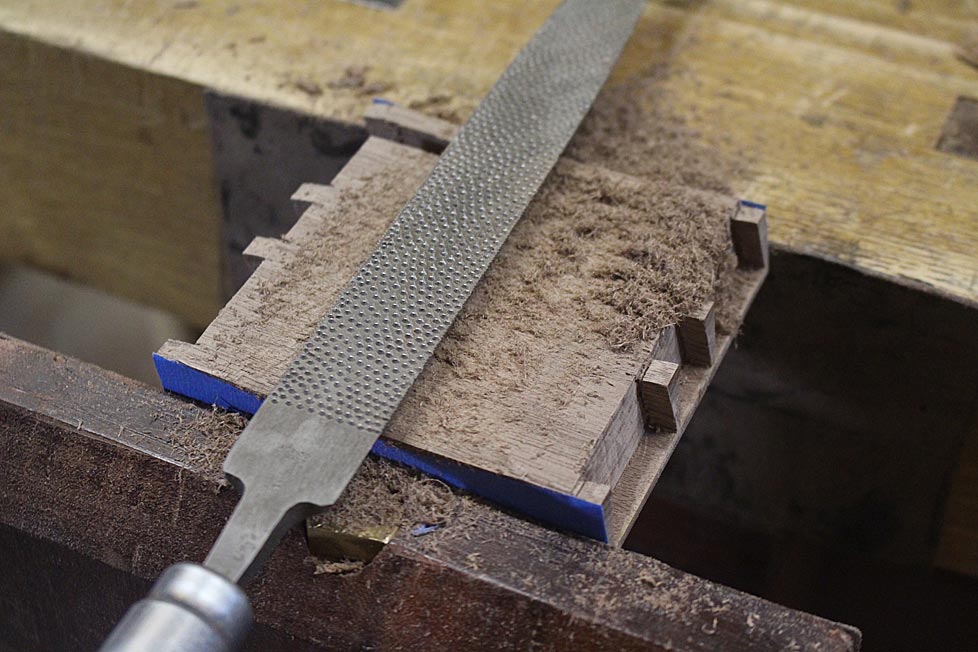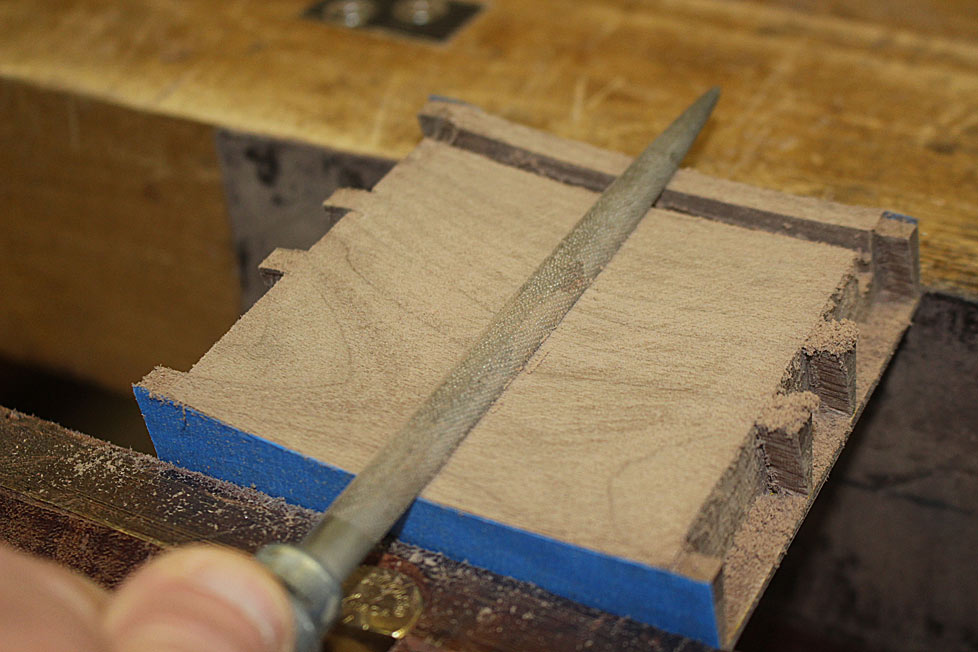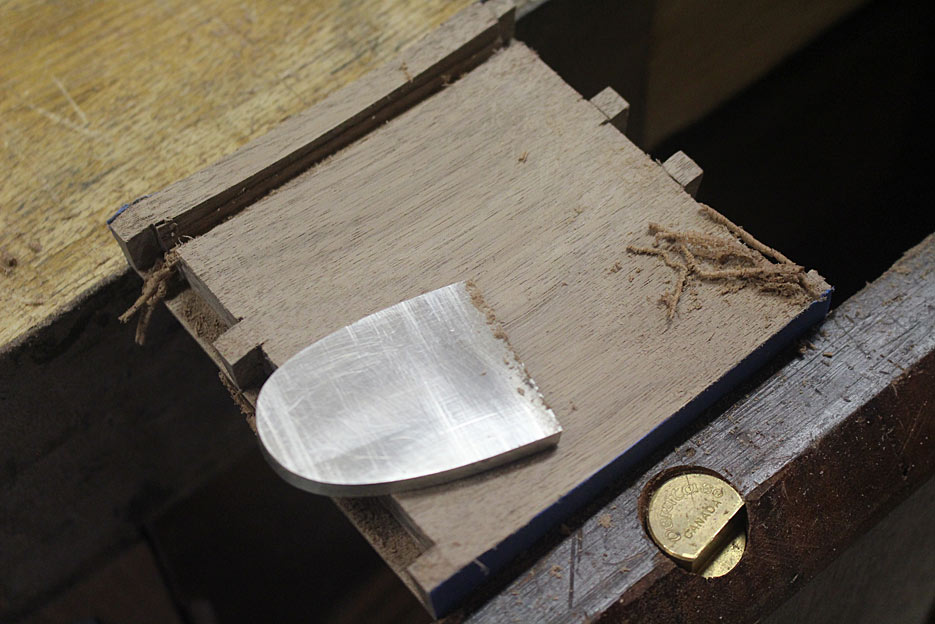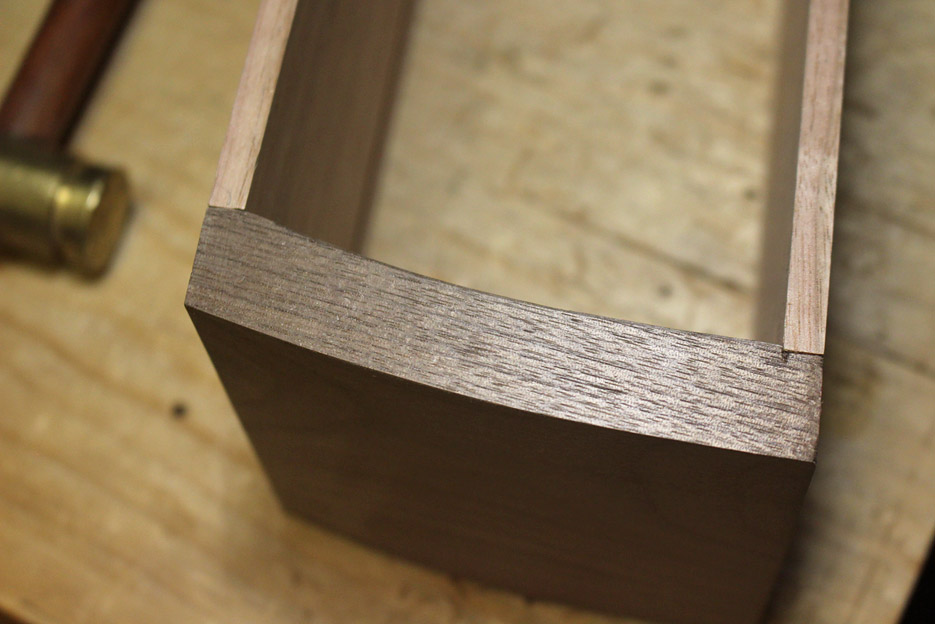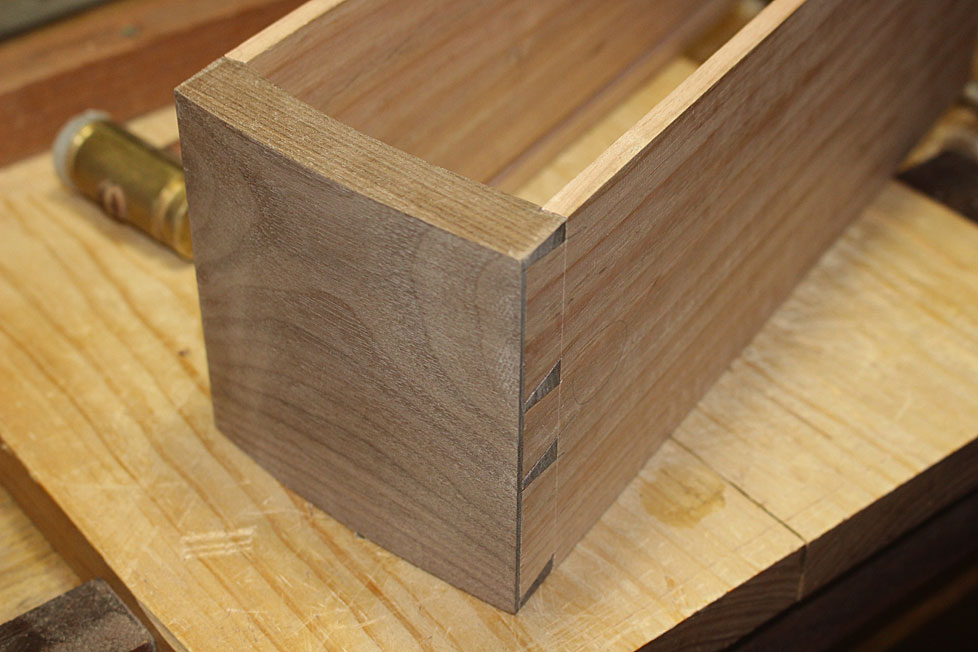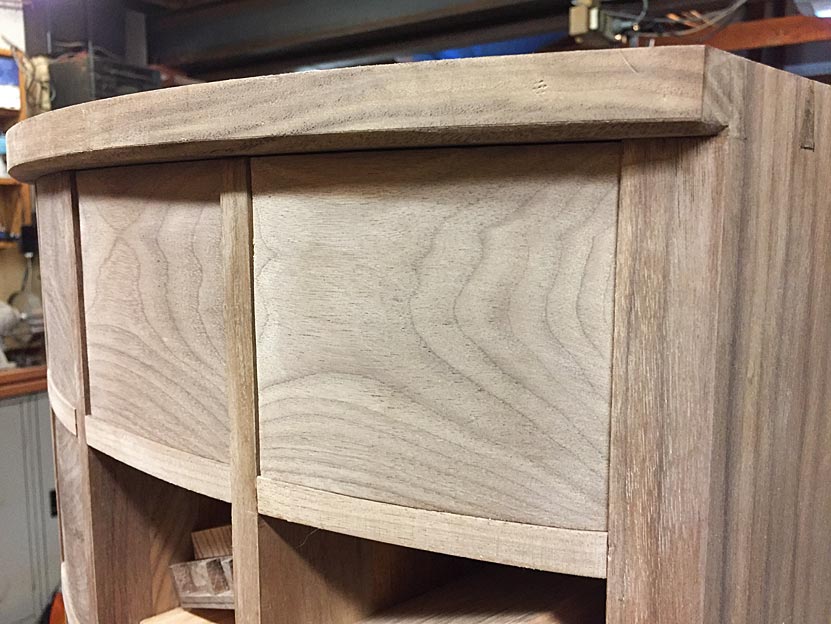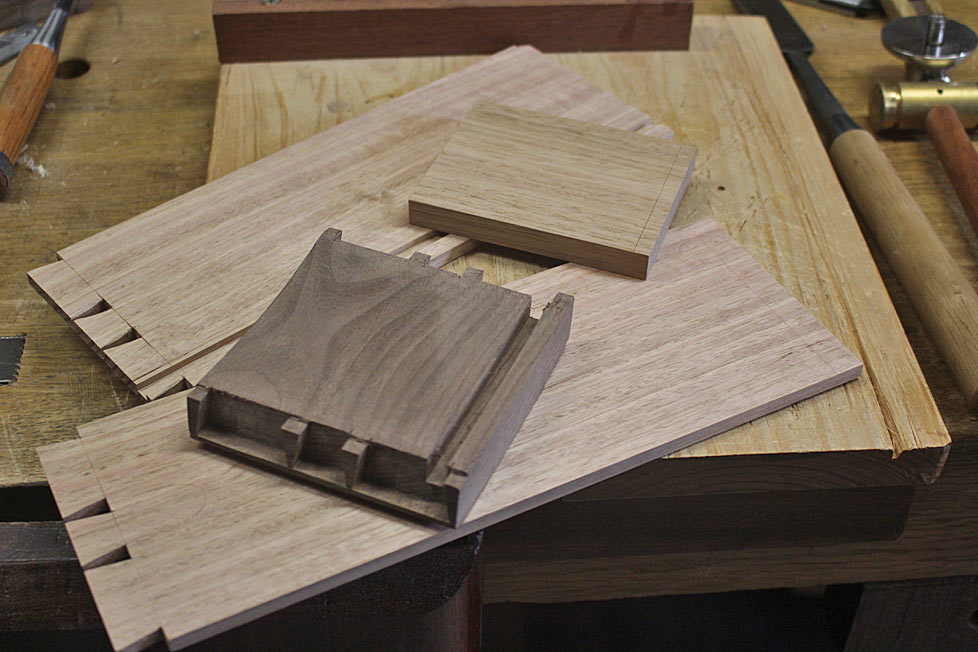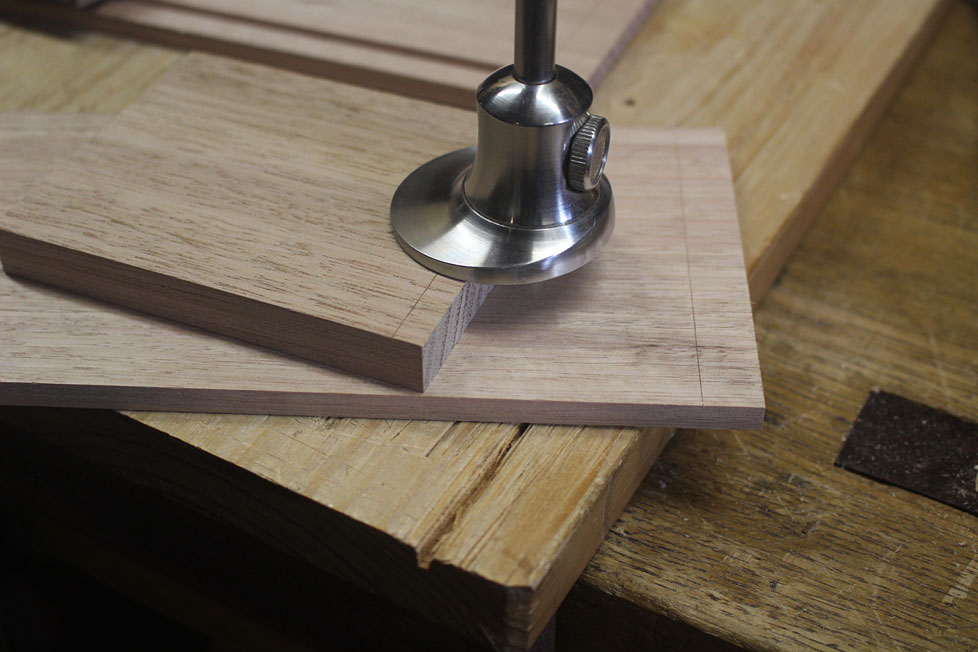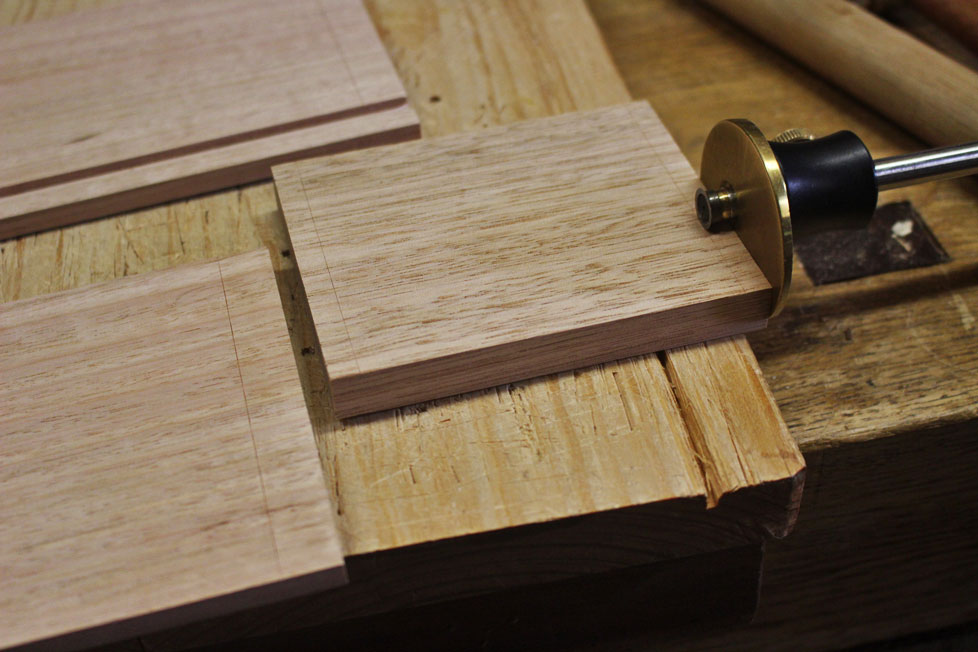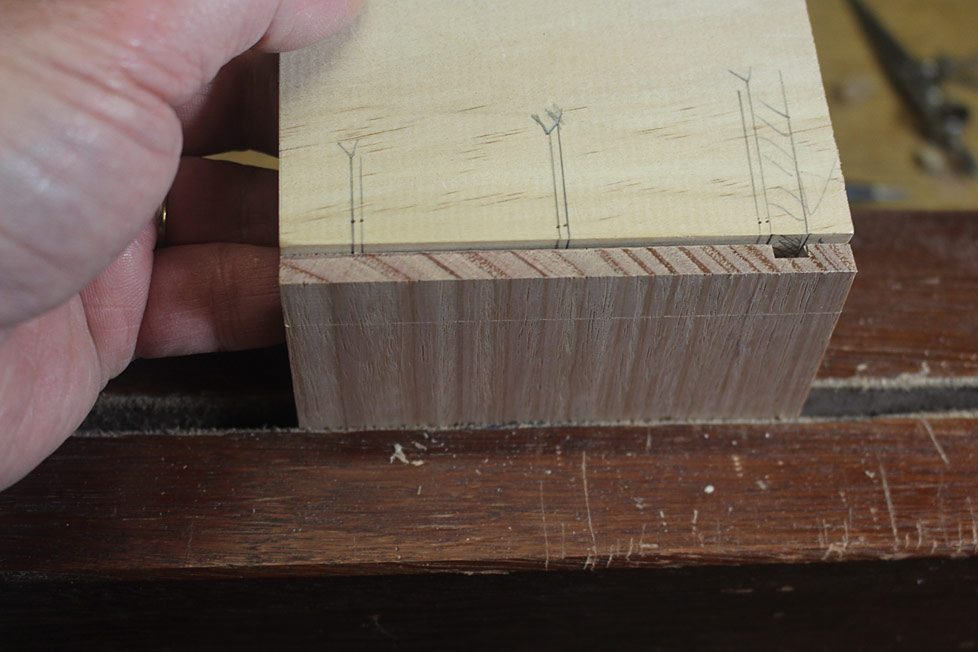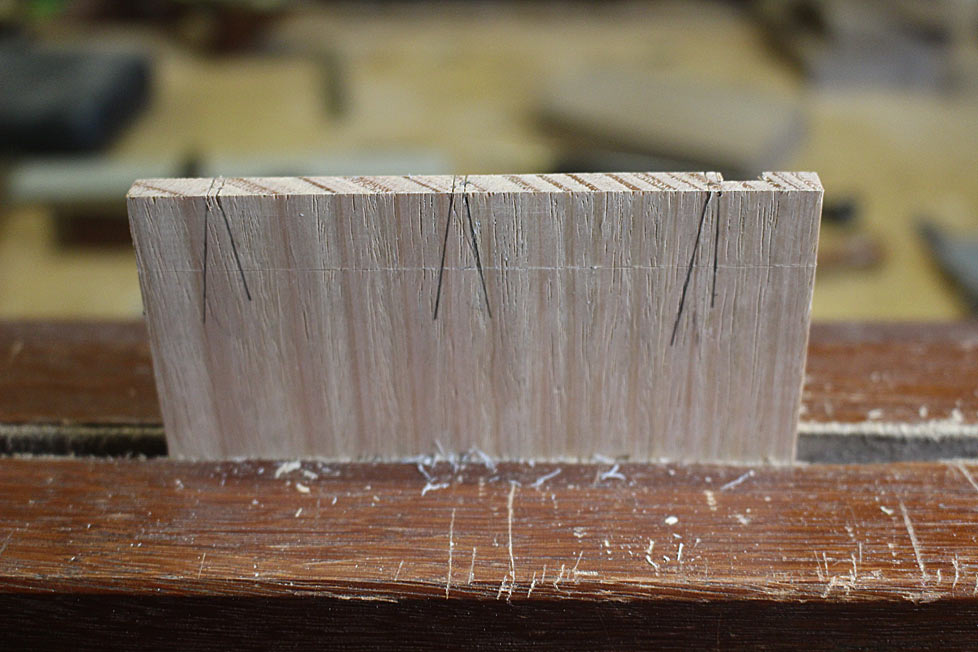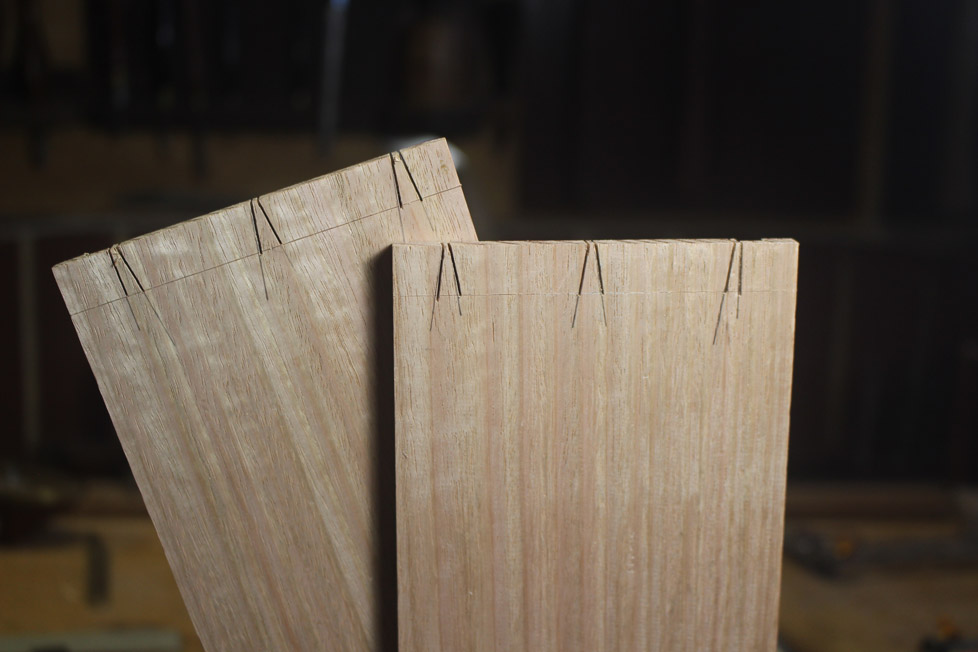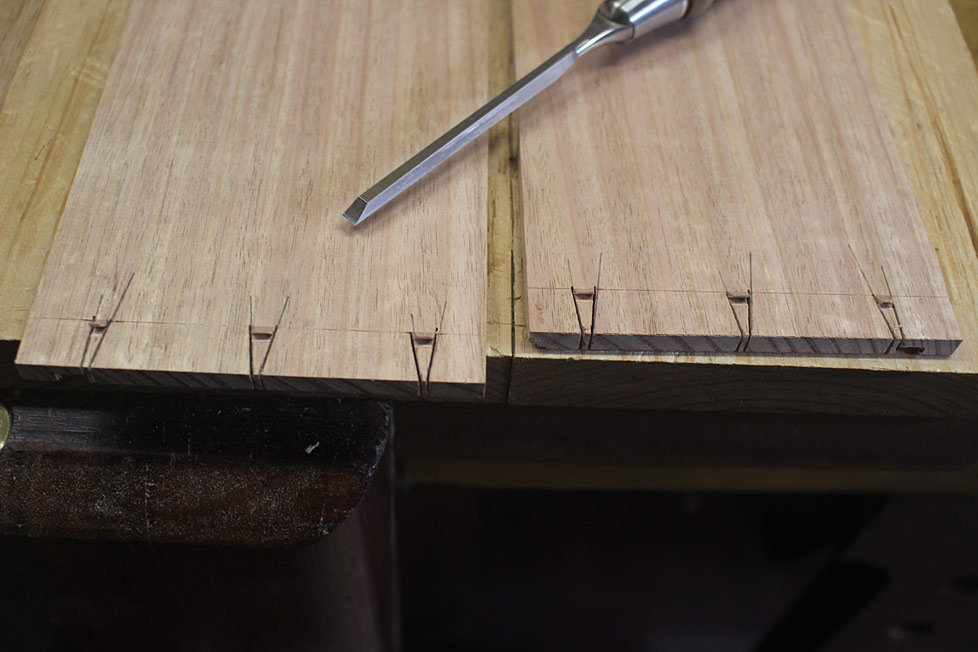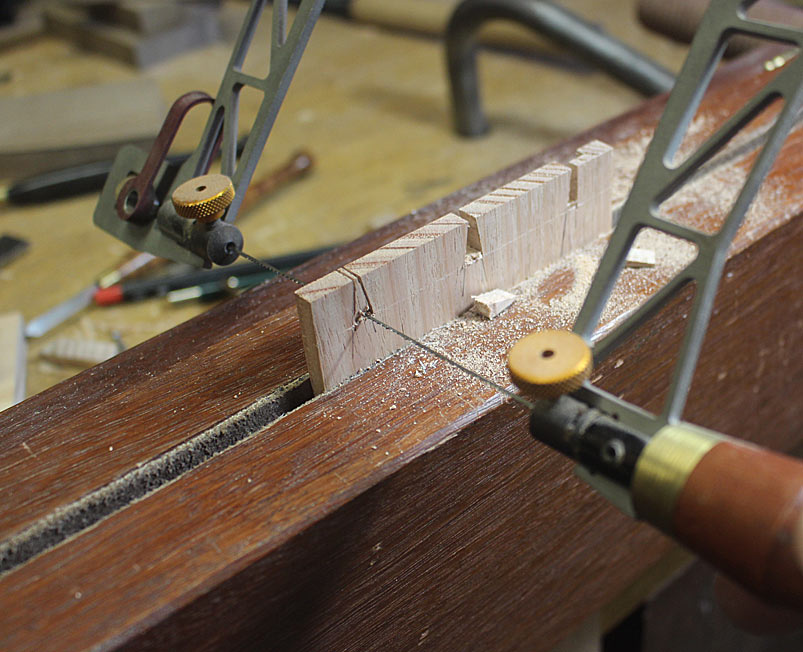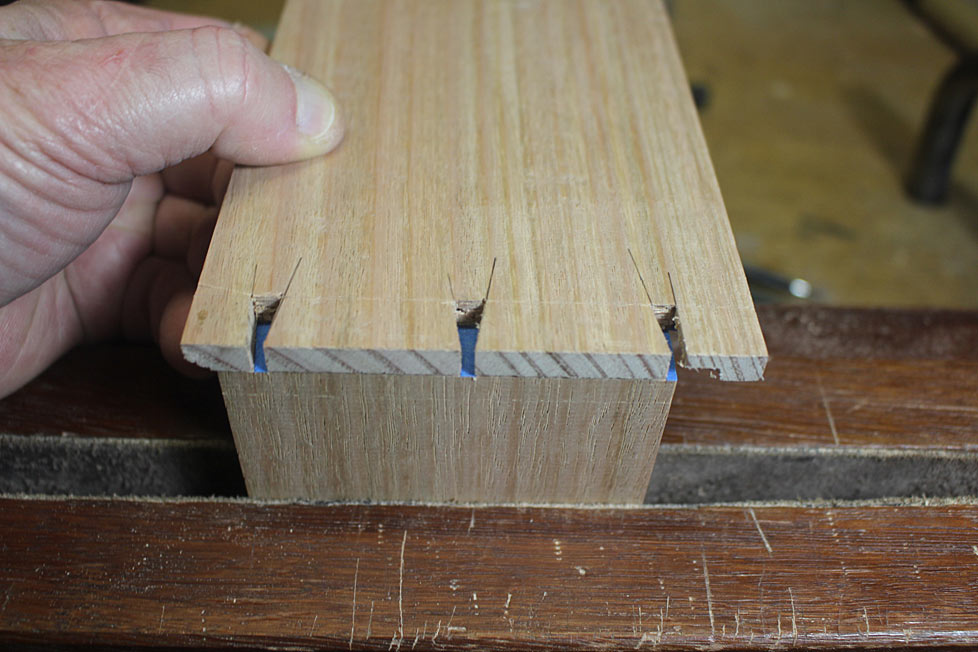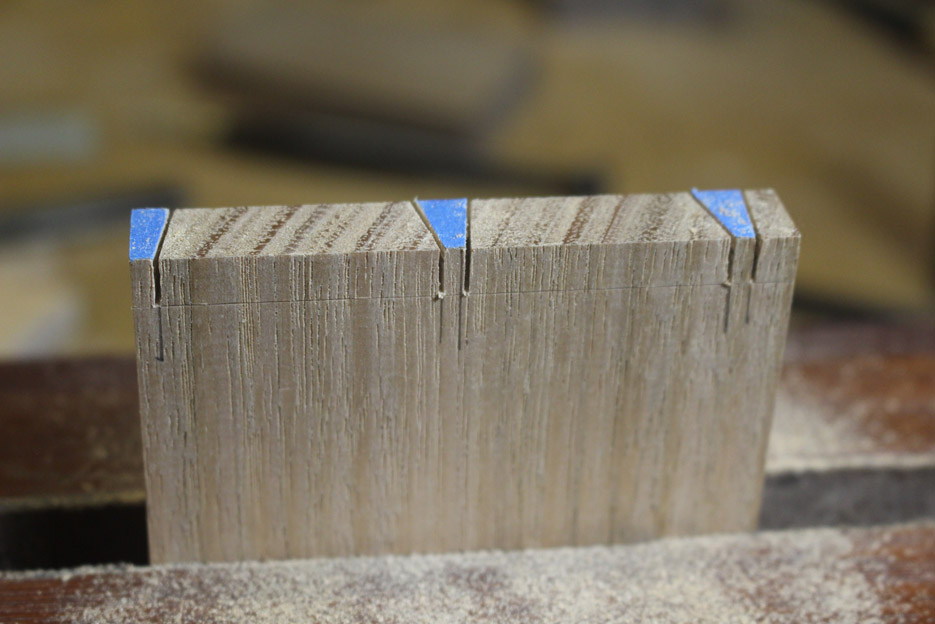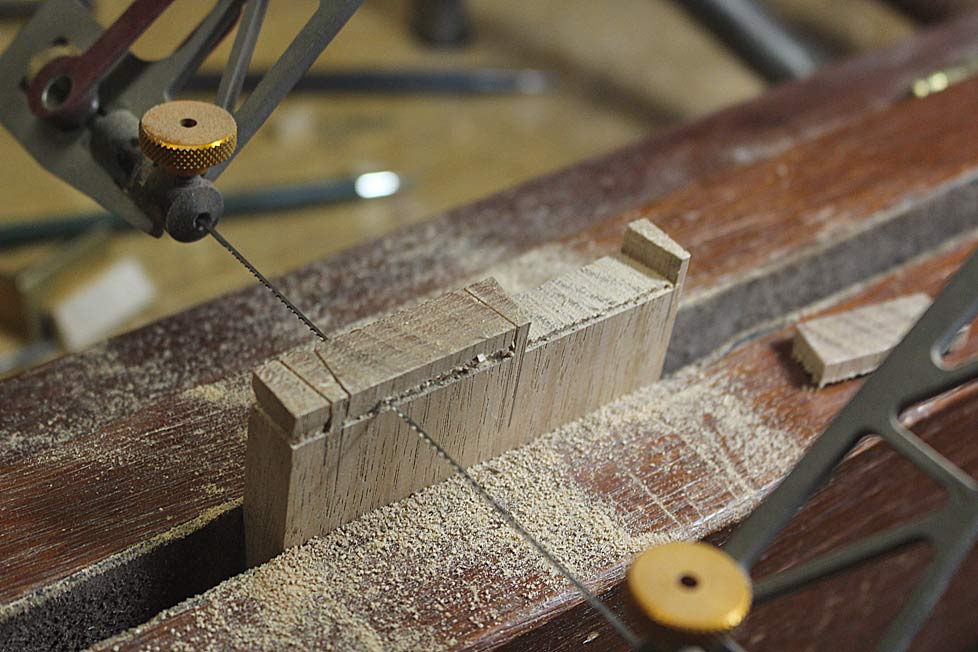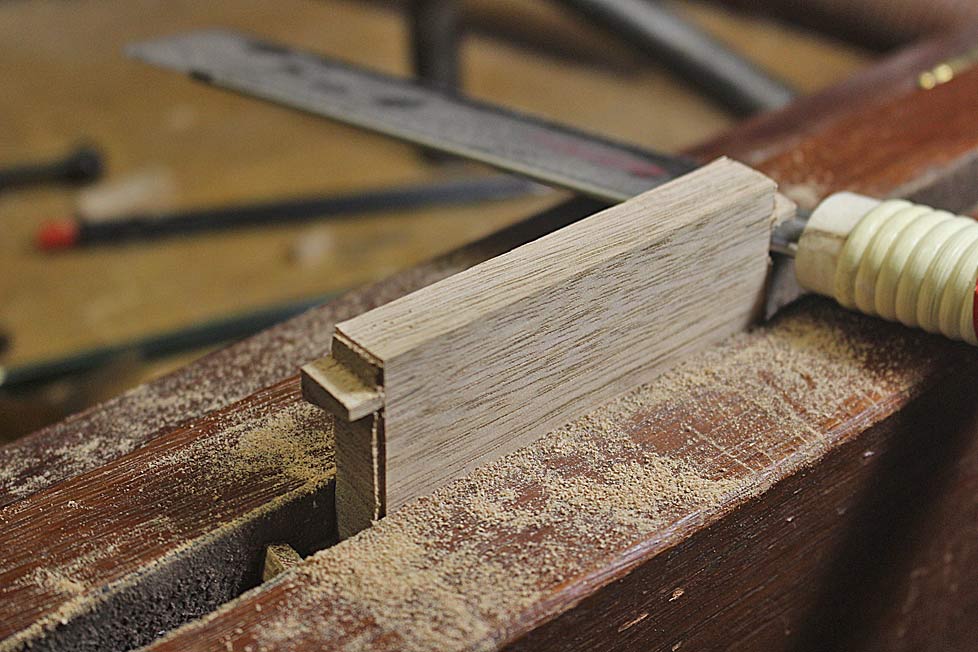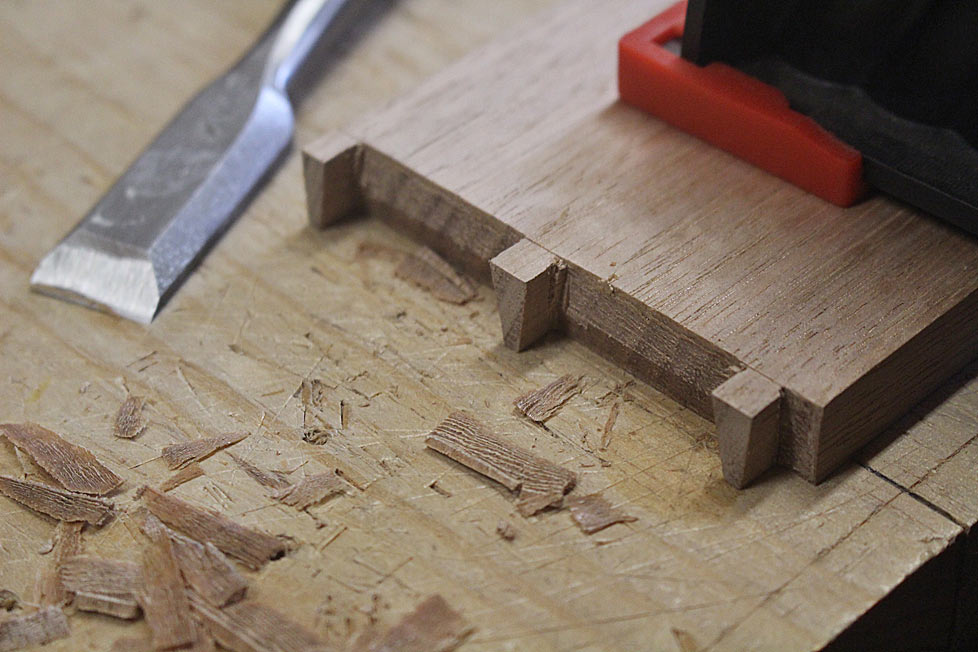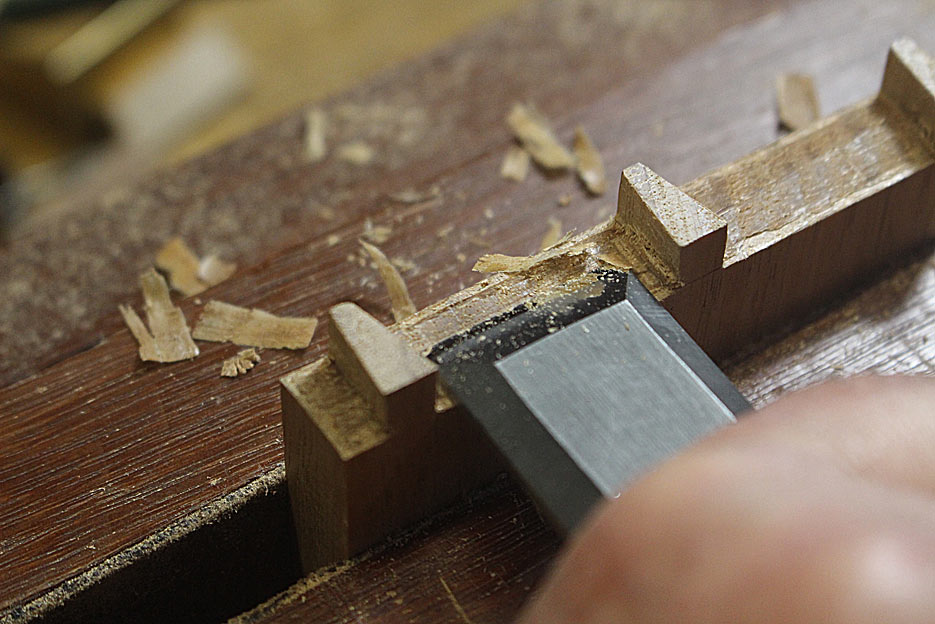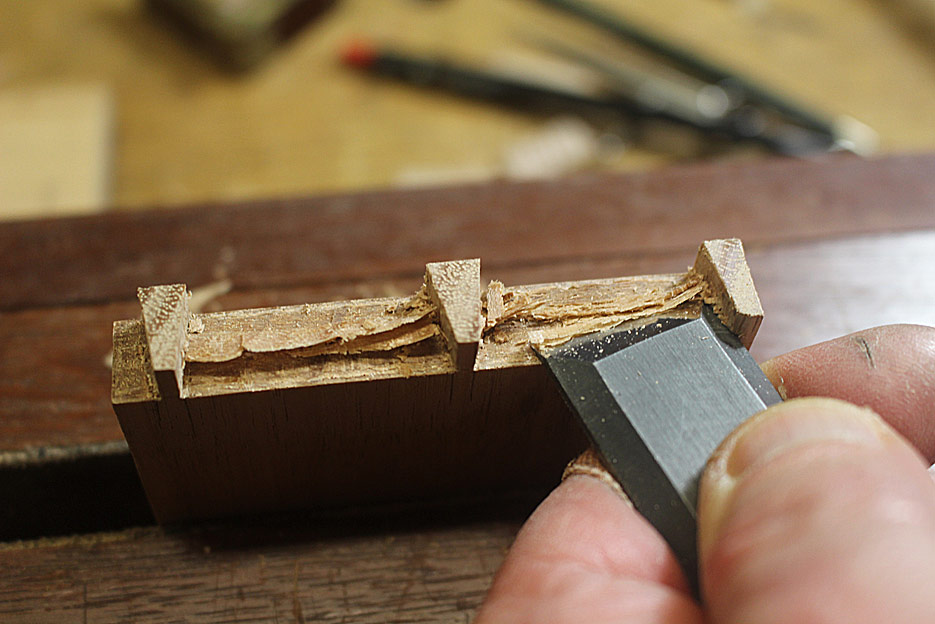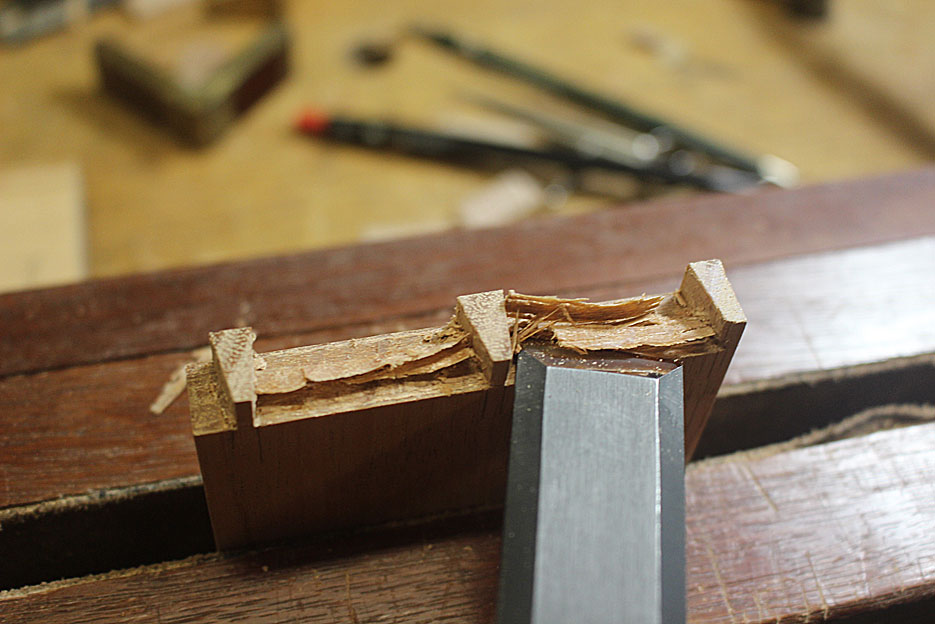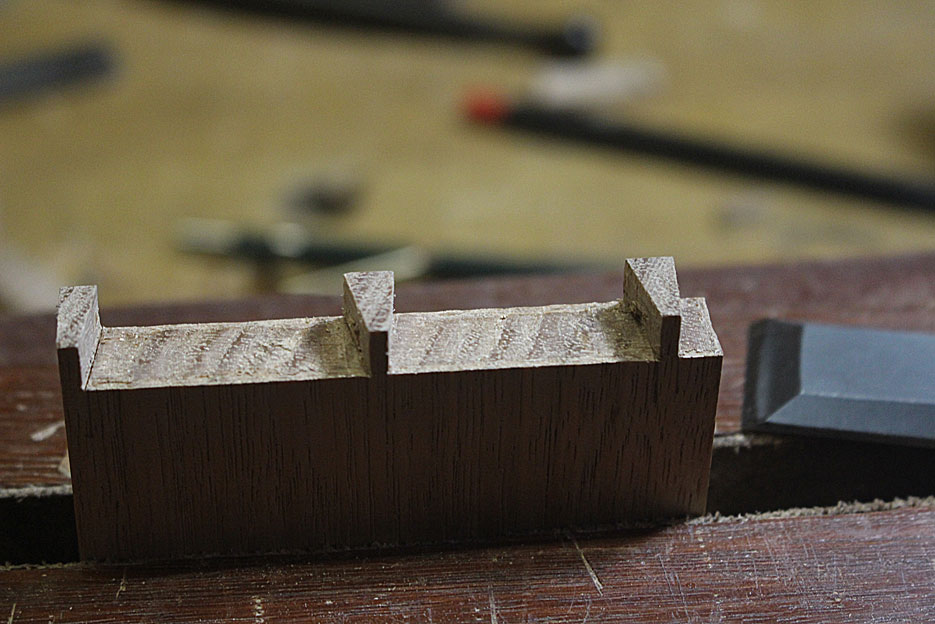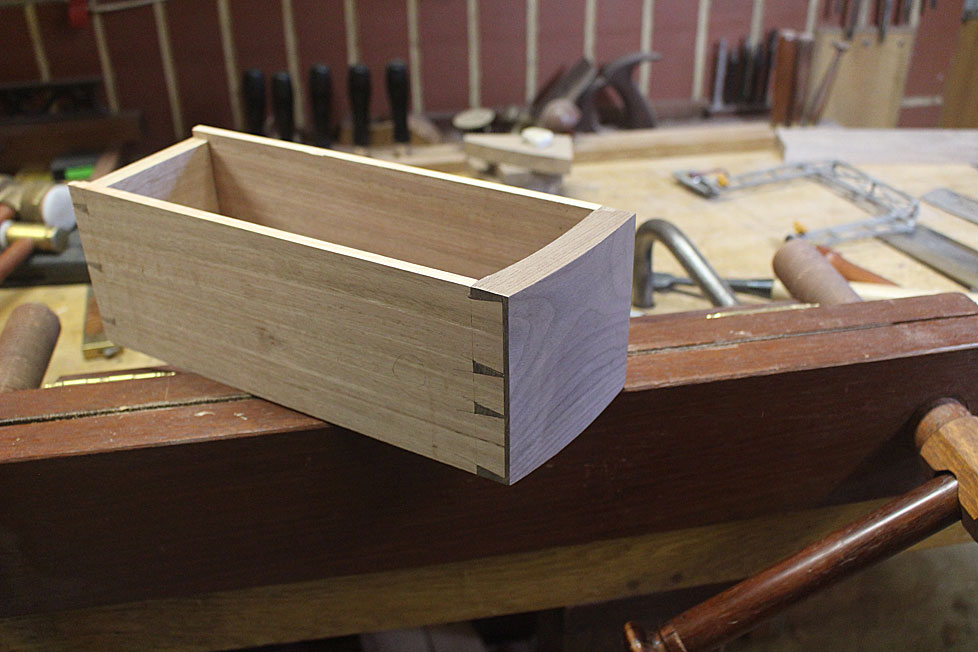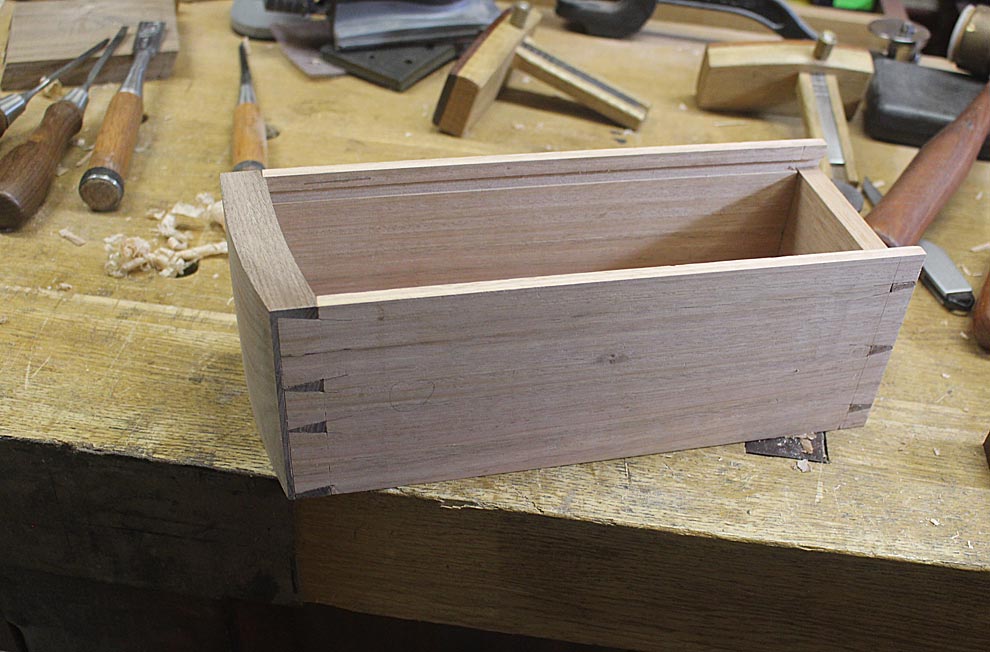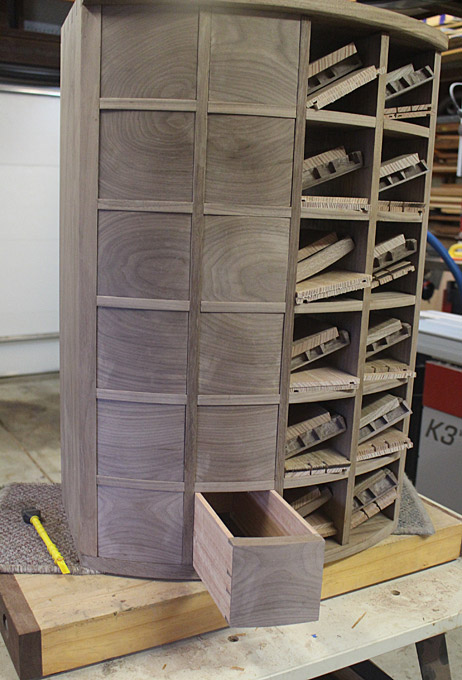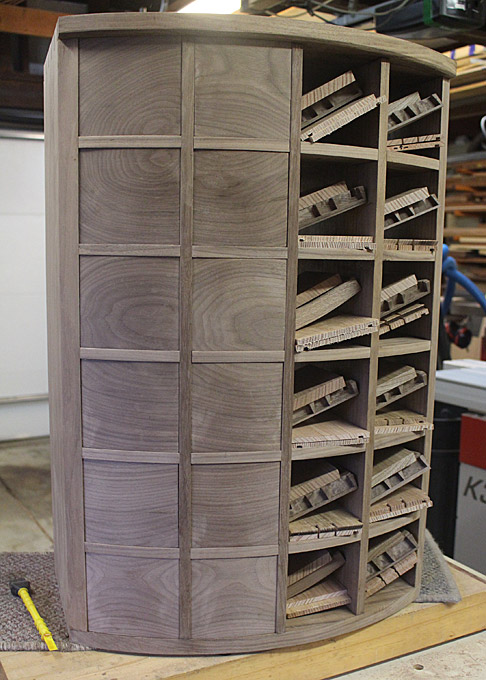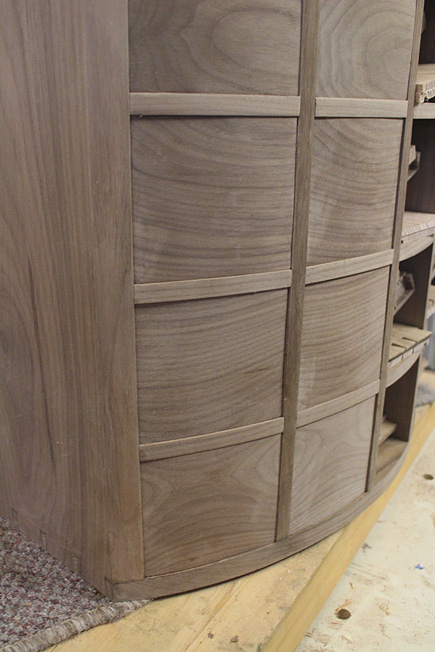This is a long post, and so feel free to skim through it. Who needs another dovetailing documentary?
This one is specific to the back of a drawer, and so is different from the through dovetails which one might use on boxes. Also, I have a few techniques to share, ones that I do not see mentioned much, if at all.
The drawer is one in the Apothecary chest. What has been shown before was the dovetailing hijinks needed for the curved fronts. This affects the drawer sides as well, since they are not equal in length. In fact, the length for the sides need to be measured individually.
Here is a drawer front with sides ...
It is fitted in the recess and positioned carefully (top right hand drawer) ...
At the rear of the chest, the drawer sides are clamped to avoid any movement ...
Now the drawer side length can be marked. The final length is 10mm in from the back of the recess.
We are ready to begin joining the rear of the drawer. A drawer back has been added to the parts ...
"Drop" (the gauge) for the width of the drawer back and transfer it to the ends of the drawer sides ...
Now do the same for the drawer sides and transfer this to the drawer back ...
With 24 drawers, it was quicker and easier to make up a template for positioning the tails ...
Note that the tail alongside the groove (for the drawer bottom) is not a triangle, but one side is vertical (flanking the groove) ...
Saw both drawer sides ...
Time to remove the waste from the tails. First, create a chisel wall for all the tails ...
Fretsaw the waste to 1-2mm from the line ...
Remove the waste in thin layers for the cleanest finish. Note that the Tasmanian Oak is too thin (6.5m) to confidently pare half way by hand (better to use a hammer for precision). By taking very fine layers it is possible to push through the board without spelching the other side ...
Blue tape on everything!! The drawer sides have blue tape ala the #140 trick (I wrote this up recently on my website). There are 4 layers. The drawer back has tape to aid in transferring marks (don't knock it if your eyesight is better than mine).
Transfer the tails to the pin board ...
The great thing about the blue tape method is that you only need one knife stroke to cut through. No sawing away to make an impression in the end grain. Saw against the tape. Go for it!
Now remove the waste with a fretsaw. Again, aim for about 1mm above the line. For control, hold the saw handle very gently, and saw as lightly as you can - do not force the cut. Let the saw do the work. You will be rewarded with a straight line ...
I saw away the ends about 1mm above the line ...
In years past, I used to saw to the line. I now see more value in paring to the line. What you will notice is the chisel wall around the section. I am reminded of David Charlesworth's method of removing end waste. He calls his process "tenting". In this he pares upward, reducing the waste all the time. In my method, this is unnecessary since the chisel wall protects the sides and you can see when you are getting close to level ...
Of all the aspects in through dovetailing, I think that removing the waste between the pins is the hardest. This is again where I was reminded of David's tenting method (but which he does not use in this section, only at the ends).
Again the chisel wall aides in enabling the chisel to register against the line without any danger of going over it. The chisel here is PM HSS, and very tough (and sharp!). The blade is driven at an angle away from the sides ...
Turning the board over, and repeating the manoeuvre, the result is a tent ...
I have two methods for removing the remaining waste. The first is to pare the tent, slowly reducing the angle. Since you are paring upwards, there is now danger to spelching the opposite side of the board ...
The second is a side-to-side sweep, which slices away the waste ...
Finished ...
The parts are now assembled. From the top ....
... and the bottom ...
Fitting the drawer ...
My plan is to set the drawers back a mm or two ...
Any thoughts about this?
Regards from Perth
Derek

































